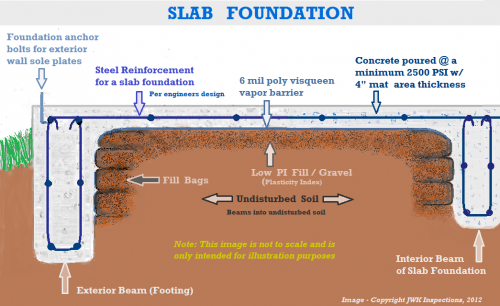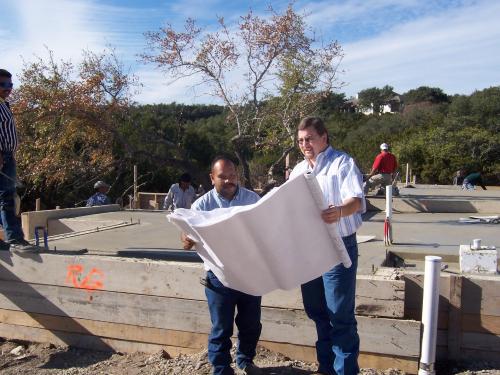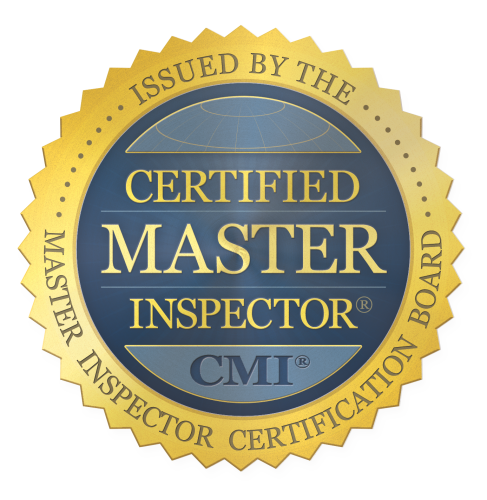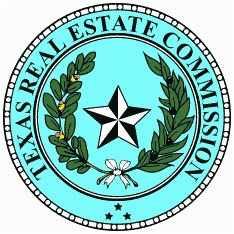4. Blogs by your San Antonio Home Inspector
New Home Construction - Slab Foundations
Submitted by JoeKeresztury on Mon, 03/15/2010 - 11:27.
New Home Construction
Stage 1 - Foundations
In the San Antonio area, foundations are usually a Concrete Slab On Grade. Sometimes referred to as a Floating Slab, designed for the expansive and shifting soils of the area. Many areas around San Antonio, mostly north, also have excessively rocky conditions which is also taken into consideration for the engineering of a foundation design. The above reasons make having basement foundations in San Antonio and surrounding South Texas areas unrealistic, mainly due to the costs that would be incurred for the excessive structular design and reinforcement needed for the expansive soils and in many areas the cost of excavation of excessive rocky conditions.
Until sometime in the sixties in San Antonio pier and beam foundations were commonly used. Older prominent and prestigious neighborhoods in the San Antonio area, such as Alamo Heights and Terrell Hills feature pier and beam foundations on their homes. But as the late sixties and early seventies came upon us in San Antonio concrete slab foundations eventually took the place of the pier and beam foundation. The shifting soils in San Antonio and surrounding areas have taken their tolls here on pier and beam foundations, and so they are not commonly used any more, and most likely not at all.
A concrete slab foundation, in our time, here and now should be designed by a licensed engineer experienced in foundation design. With the help of soil tests for certain homesite areas an engineer will provide a needed and in most cases a required engineered foundation design and after the pre pour inspection by the engineer an engineers approval certification will/should be issued.
In the engineers plan / design of a slab foundation the size of the beams(footings) will be determined for depth and width. Along with beam size the engineer will also determine how deep the foundation beam(s) should penetrate into undisturbed soil. Exterior beams run the perimeter of the foundation and the location of interior beams are determined by design and are not more than 12' apart. Foundation beams will run in both directions . The engineered foundation plan also indicates the size of the reinforcement steel (re-bar) used in the slab. In the case of a post tension slab the cables (in lieu of the steel re-bar) are designed also by engineers. Over the years most slab foundations in the San Antonio area were steel re-bar reinforced with a growing popularity of Post Tension slabs especially by the volume builders in recent years. See Post Tension Slab info @ http://www.jwkhomeinspections.com/san-antonio-home-inspector-post-tension-slab-foundation.html
So after the lot is cleared the foundation contractor will lay out the home on site as per the architectural site plan. After approval by builder and / or buyer the foundation contractor is ready to set forms. The rough frame of forms will be set and squared up as per site plan and the verified and approved foundation location.
At this time a form survey or setback verification survey should be ordered. Most local builders know that a slab draw ( construction progress draw) after the slab pour will not be released without the form survey / setback verification survey. This will verify to the construction lender and all other parties involved that the foundation is not encroaching on setbacks, easements or property lines. Get the setback verification survey at form set. It’s easier to move forms then the poured concrete slab if there is an issue!!
As the forms are set the foundation contractor will start delivering truckloads of fill. This fill will be of a low plasticity index, usually gravel that is approved for local slab foundations.
After the rough frame forms are set the plumbing contractor will come in and rough in the plumbing, this being all of their in slab PVC drain lines. After they are done they will fill their PVC lines with water and wait for the local required inspection to approve their work.
Next the fill crew will come in and with small loaders like Bobcats will load fill into the slab area. The fill will be recessed / setback from beam areas as they will bag the fill to stay in place and will leave a minimum 4" area above the fill at the mat area (top of slab) for concrete.
Slab Foundation shown here with forms set, plumbing drain lines roughed in and fill installed & bagged
At this point the steel crew will come in and cover all the filled areas with a 6 mil poly vapor barrier. That’s the heavy duty black plastic I’m sure you have seen many times. This poly visqueen comes in large sections and will be taped at joints, tears and penetrations. The steel crew installs the engineer designed steel reinforcement bars (re-bar) throughout the entire slab area. In the beams, stirrups (vertical re-bars w/ bottom loops) are installed and attached with tie wire to hold in place the horizontal re-bars thru the beams.

Image of a rebar slab foundation.
Corner re-bars attach to the beam steel reinforcement bars to make a continuous connection. The mat steel on the top area of the slab foundation is run in both directions with the spacing as per engineer design and is tied together at intersections. All steel re-bar is chaired up (raised and separated) from the covered fill and from the bottom of the beam areas.
At this point the form setters come back as the steel tyers are tying steel together and also chairing up the steel re-bar in the mat area. When they chair up the steel they are lifting and providing separation from the vapor barrier covered fill to the steel for the concrete. This is accomplished with brick pieces or plastic chairs.
The form setters come back to close up the forms. At this time they close up any openings they left for trucks to dump fill and they complete any other needed areas including adding in headers(forms) at slab drops, steps or interior forms that weren't needed or able to be installed at the original rough form set. Also at this time the form setters reinforce all bracing preparing for the inspection and slab pour.
The plumbers will now return for their copper pull (water lines being installed) in the slab. As recently seen and used in San Antonio, plumbers have used Ki-Tech a plastic coated, aluminum water line with brass fittings in lieu of copper that now has multiple national and/or international class action law suits in progress against their product. http://www.nachi.org/kitec-fittings.htm
Note: PEX water lines (another alternative to copper) is different and safe as compared to Kitec.
Copper water lines thru the slab are installed with separation from re-bar. If PEX water lines are used, they commonly are now run thru the ceiling frame in lieu of thru the slab.
After any required inspections and engineers certification the foundation is ready to be poured.
A San Antonio area slab pour
The concrete pour is done in one day. The concrete used to pour a foundation is required to be a minimum 2500 psi, but most contractors will order and pour a 3000 psi concrete which will cure to even a higher psi. If concrete trucks are not able to back up to at least 3 sides of the slab pour than a concrete pump should be ordered for proper concrete placement, otherwise if concrete chutes from the delivery truck don’t reach areas than concrete might be watered down by finishers to be able to more easily spread the concrete to unreachable areas. The concrete on a slab foundation will not cure to about 98 percent for close to a month, but the slab is ready to walk on the next day and yes, cured enough to be ready for the framers to start framing the house. The image shows the most commonly used anchor bolt for slab foundations in the San Antonio area. They are to be at least 7" long, 1/2" in diamater and are installed by the concrete finishers at slab pour in the exterior wall areas. They should project out of the slab 2-1/2". The nuts and washers need to be galvanized as are the anchor bolts themselves.
The image shows the most commonly used anchor bolt for slab foundations in the San Antonio area. They are to be at least 7" long, 1/2" in diamater and are installed by the concrete finishers at slab pour in the exterior wall areas. They should project out of the slab 2-1/2". The nuts and washers need to be galvanized as are the anchor bolts themselves.
Close to the completion of a home the foundation contractor will come back and give the exposed perimeter foundation areas a (non structural)cosmetic skim coat, which will be a cement, plaster finish.
By Joseph W. Keresztury, San Antonio Home Inspector
Photos and image by JWK Inspections Image by Bolt Depot
JWK Inspections performs New Home Construction Phase Inspections along with many other type Inspections in San Antonio and surrounding areas. For info call 210.559.3236




















